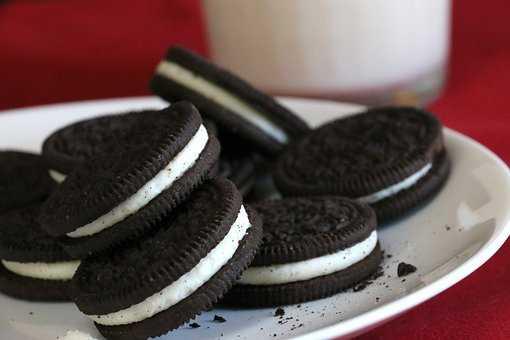The untold truth of Oreos
Curated from: mashed.com
Ideas, facts & insights covering these topics:
4 ideas
·2.99K reads
6
Explore the World's Best Ideas
Join today and uncover 100+ curated journeys from 50+ topics. Unlock access to our mobile app with extensive features.
Oreos: The best-selling cookies in the world
Oreos have been around since 1912. They are the best-selling cookies in the world and sold in over 100 countries.
When they were introduced in 1912, they were known as Oreo Biscuit, then changed names to Oreo Sandwich in 1921, and 1937 took on the name of Oreo Crème Sandwich. The final change came in 1974 when the cookie became known as the Oreo Chocolate Sandwich Cookie.
61
1.05K reads
Oreo was not an original concept
Food scientist Sam J. Porcello invented the newer version of the Oreo. He was one of the world's foremost experts on cocoa and helped develop the extra indulgent chocolate and white chocolate-covered Oreo.
The original recipe for Oreo cookies contained lard (pork fat). With the changing climate of the low-fat 1990s, the lard was replaced, and the cookie became kosher and unexpectedly also vegan.
56
748 reads
Unusual Oreos
- In 1984, The Oreo Big Stuf was launched. Individually wrapped, the snack was a massive 316 calories (a single Oreo contains about 53 calories) and took around 20 minutes to eat.
- Oreo cookies are also used in pie crusts, churros, and ice cream cones.
- In January 2017, Virginia-based The Veil Brewing Company released a version of their chocolate milk stout infused with real Oreo cookies. It was sold out within a week.
- Game of Thrones Oreo: One winter, a special edition Oreos came out embossed with the crests of the four remaining (at the time) houses. The cookie company went to the production company that made the main titles for GoT Elastic. The Oreo-meets-GoT universe took about 2,750 computer-generated Oreos with 20 million crumbs scattered throughout the Oreo-scape.
53
575 reads
The design of Oreos
William Turnier was responsible for designing the Oreo. He initially worked at the company mailroom, shadowed creative employees within the company and learned industrial engineering. He was later asked to update Oreo's design.
The design goes back to monks in Medieval times. The monks used the design on the bottom of manuscripts copied. It was a sign of craft, saying they did the best they could. The company liked the look and the meaning, and Oreo received its new design.
68
618 reads
IDEAS CURATED BY
Noelle H.'s ideas are part of this journey:
Learn more about health with this collection
How to set boundaries to protect your energy
How to cultivate positive energy
Why rest and recovery are important
Related collections
Similar ideas
Read & Learn
20x Faster
without
deepstash
with
deepstash
with
deepstash
Personalized microlearning
—
100+ Learning Journeys
—
Access to 200,000+ ideas
—
Access to the mobile app
—
Unlimited idea saving
—
—
Unlimited history
—
—
Unlimited listening to ideas
—
—
Downloading & offline access
—
—
Supercharge your mind with one idea per day
Enter your email and spend 1 minute every day to learn something new.
I agree to receive email updates

